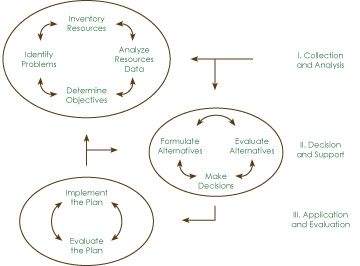How often have you been halfway through a project only to be sidetracked by unexpected obstacles? Can you count the times you have witnessed valuable resources being wasted from inefficient planning? I imagine we have all experienced the project where we were met with unexpected delays and an expanding budget. Waste, unexpected costs and delays can be minimized or completely avoided with proper planning. My favorite quote on this subject is from Abraham Lincoln where he suggests, “Give me six hours to chop down a tree and I will spend the first four sharpening the axe.”
I believe our most important resources are time and energy. However one values them, planning proves an indispensable tool to minimize the waste of time and energy (and all other resources). Given the task in the previous quote, most people would grab the axe and begin chopping the tree. I would imagine while he was sharpening his axe, President Lincoln would have also used his time to plan a specific strategy to cut the tree. He would begin by visualizing where he would begin his cut, specifically which direction the tree would fall and how to maximize his use of time and energy. Before he begins, he would prepare his mind for the task and have a specific strategy.
Planning is the calculation of strategy to organize the resources and activity required to achieve a goal. It involves the prediction of challenges as well as the accumulation and implementation of resources – then constant evaluation. Planning is a fundamental property of intelligent behavior. The thought process is an essential part of the development and implementation of planning. And, lucky for us, planning is a natural part of our thinking process. For complex or long-term plans, higher thinking is necessary as it usually involves the integration of many separate plans. This process requires the forecasting of developments with the preparation of scenarios and how to react to them. It sounds complex, but it is the basis for most of the board games we learned as children. Chess, checkers, backgammon and Monopoly… they are all about planning, strategy and scenarios.
Too many people are intimidated by the word plan. But planning is really about being prepared. Most people are familiar with the quote, “Failure to plan is a plan to fail.” This quote is credited to dozens of people and I do not know its origins. I believe the quote to be a variation of Benjamin Franklin’s famous words, “By failing to prepare, you are preparing to fail.” While it embodies the same sentiment, studies show most people are more emotionally compatible with the thought of being prepared than they are with making a plan. But in essence, they are the same. Planning is the process of making or carrying out plans; specifically: the establishment of goals and the implementation of resources and procedures. In other (maybe, more compatible) words, planning is simply preparing for the success of the goal. Webster’s Dictionary provides the following definitions:
Plan:
1. a method for achieving an end: procedure.
2. a detailed formulation of a program of action toward a goal.
Prepare:
1. to make ready beforehand for some purpose, use or activity.
2. to work out the details of; plan in advance.
3. to put in written form.
4. to get ready.
In theory, planning is as simple as preparing for a road trip, be it across town or cross-country. A plan should ask and answer fundamental questions relative to the goal. Questions such as: Where am I? Where do I want to be? How am I going to get there? What resources will I need?
Planning should include resource strategies that in advance determine what to do, how to do it, when to do it, and who should do it. A good plan will answer who, what, when, why, where and how. Effective planning will commit all that knowledge with appropriate resources. It should direct this anticipatory decision making into coordinated action.
The following procedure is a planning process that continues until the objective is reached. It is cyclical and will repeat certain stages until all necessary adjustments are made. It has proven efficient and reliable through generations of application and based on information published by the United States Government. (See figure below)
 The Planning Process
The Planning Process
1. Collection and Analysis
a. Identify problems
b. Determine objectives
c. Inventory resources (required)
d. Analyze resource data
2. Decision and Support
a. Formulate alternatives
b. Evaluate alternatives
c. Make decisions
3. Application and Evaluation
a. Implement the plan
b. Evaluate the plan
In our business lives, productivity, efficiency, profitability and success are all directly relative to planning. In most cases, these goals are directly limited by an ineffective planning process. To become effective business tools, plans should always have a specific purpose. They must identify potential obstacles and prepare initiatives to overcome them. They must document and provide necessary resources. And, they must cycle through this process with adjustments until the purpose is realized.
Benefits of Organizational Planning
- Provide direction.
- Organize available resources.
- Motivate personnel.
- Increase efficiency.
- Reduce risks.
- Minimize obstacles.
- Aid in decision making.
- Provide coordination.
- Provide control.
- Encourage creativity and innovation.
All this banter implies that the worst plan is no plan at all. It provokes a similar consideration, “In the absence of a decision, a decision is made… indeed, to do nothing.” Since decisions are such a necessary part of the planning process, it is critical we recognize the need to practice these procedures until we become comfortable with the process. To provide inspiration to such, I offer the following quotes:
“First you write down your goal; your second job is to break down your goal into a series of steps, beginning with steps which are absurdly easy.”
– Fitzhugh Dodson
“It’s not the plan that is important, it’s the planning.”
– Graeme Edwards
“Reduce your plan to writing. The moment you complete this, you will have definitely given concrete form to the intangible desire.”
– Napoleon Hill
“Productivity is never an accident. It is always the result of a commitment to excellence, intelligent planning, and focused effort.”
– Paul J. Meyer
“A first-rate ‘organizer’ is never in a hurry. He is never late. He always keeps up his sleeve a margin for the unexpected.”
– Arnold Bennett
“It is important not to ignore forecasts that are uncongenial.”
– Jib Fowles
Practical Application
Provided you have already completed the practical lessons for Parts I, II and III of this series, start a journal for your plans. Schedule a few minutes each week to think about your future. You might begin by including the most practical of the short-term goals that were documented in the goal setting process’ in Parts II and III. Evaluate the circumstances in your life where adjustment and strategic planning will take you closer to any of these goals. Include some of the long-term goals in your journal. While visualizing yourself as if those goals have been achieved, look back to see how you might have gotten there. Move your thoughts around different strategies and scenarios of what resources might be required or what paths would lead to that destination.
Personal Tip
I use a journal because I like to plan with pen and paper. I find it easier to think creatively without staring at a computer screen. It has long been understood that we use different sides of our brain to engage in analytical or creative behavior. This clearly translates to which instruments we hold in our hand. A pen is a creative instrument. While I make effort to apply technology in every beneficial way, I have always found the pen to stimulate the most creative ideas during a strategy or planning session. I make notes, draw up an outline, then fill in the basic detail. Once I have a developed plan, I will turn to the computer to document, organize and further develop the strategy of my plan. There is no “right” formula for getting started. Planning is a bit like a golf swing, whatever works… works. Focus on making contact and develop toward your goal from there.
 William Strunk is the publisher of DERMASCOPE Magazine, founder of WES Publishing Co., founding partner with Avalon Media Group and a partner with the International Congress of Esthetics & Spa. As an entrepreneur for over 30 years, an author and lecturer, Strunk conducts motivational seminars and results oriented workshops on successful business practices. Having started his first business as a teenager, he shares successful behavioral practices that are not taught in business schools. Rather, learned from a lifetime devoted to motivational training and developing relationships with hundreds of other
William Strunk is the publisher of DERMASCOPE Magazine, founder of WES Publishing Co., founding partner with Avalon Media Group and a partner with the International Congress of Esthetics & Spa. As an entrepreneur for over 30 years, an author and lecturer, Strunk conducts motivational seminars and results oriented workshops on successful business practices. Having started his first business as a teenager, he shares successful behavioral practices that are not taught in business schools. Rather, learned from a lifetime devoted to motivational training and developing relationships with hundreds of other
successful entrepreneurs.
Want to read more?
Subscribe to one of our monthly plans to continue reading this article.